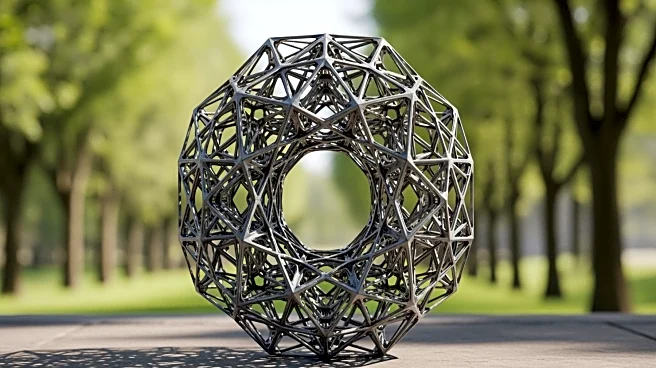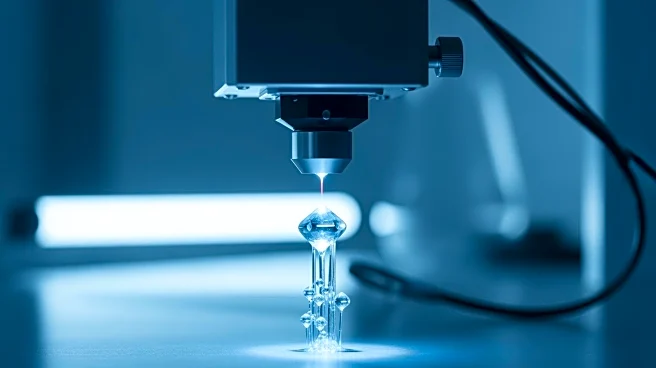What's Happening?
Researchers at the University of Konstanz have developed a groundbreaking technique that uses light to alter the magnetic properties of materials without generating heat. This method involves using laser pulses to excite pairs of magnons, which are quanta
of spin waves, allowing for the manipulation of magnetic states at room temperature. The process does not rely on rare materials but uses common crystals like haematite. This discovery could revolutionize data storage and transmission by enabling operations at terahertz speeds without the heat buildup that typically slows down systems. The findings, published in Science Advances, suggest that this technique could also facilitate quantum research by enabling the study of quantum effects at room temperature, eliminating the need for costly cooling systems.
Why It's Important?
This development holds significant implications for the future of information technology and quantum research. By enabling data transmission and storage at terahertz frequencies without heat accumulation, this method could alleviate the current data bottleneck faced by information systems. The ability to manipulate magnons at high frequencies opens new avenues for technological advancements, potentially leading to more efficient and faster data processing systems. Additionally, the use of common materials like haematite makes this approach more accessible and sustainable. The potential to study quantum effects at room temperature could accelerate research in quantum computing and other advanced technologies, reducing the reliance on expensive and energy-intensive cooling methods.
What's Next?
The next steps involve further exploration of this technique's applications in both data storage and quantum research. Researchers may focus on refining the method to enhance its efficiency and exploring its integration into existing technologies. The potential for creating light-induced Bose-Einstein condensates of magnons at room temperature could lead to new breakthroughs in quantum mechanics. As the technology develops, it may attract interest from industries looking to improve data processing capabilities and from academic institutions aiming to advance quantum research. The widespread availability of haematite could facilitate broader adoption and experimentation with this technique.
Beyond the Headlines
This discovery also raises questions about the future of material science and the role of light in manipulating material properties. The ability to change a material's 'magnetic DNA' without thermal effects could lead to new materials with tailored properties for specific applications. This could have ethical and environmental implications, as the method's reliance on common materials reduces the need for rare earth elements, potentially decreasing the environmental impact of material extraction. The technique's non-thermal nature also suggests a shift towards more energy-efficient technologies, aligning with global efforts to reduce energy consumption and carbon emissions.













